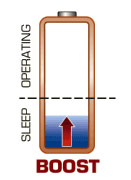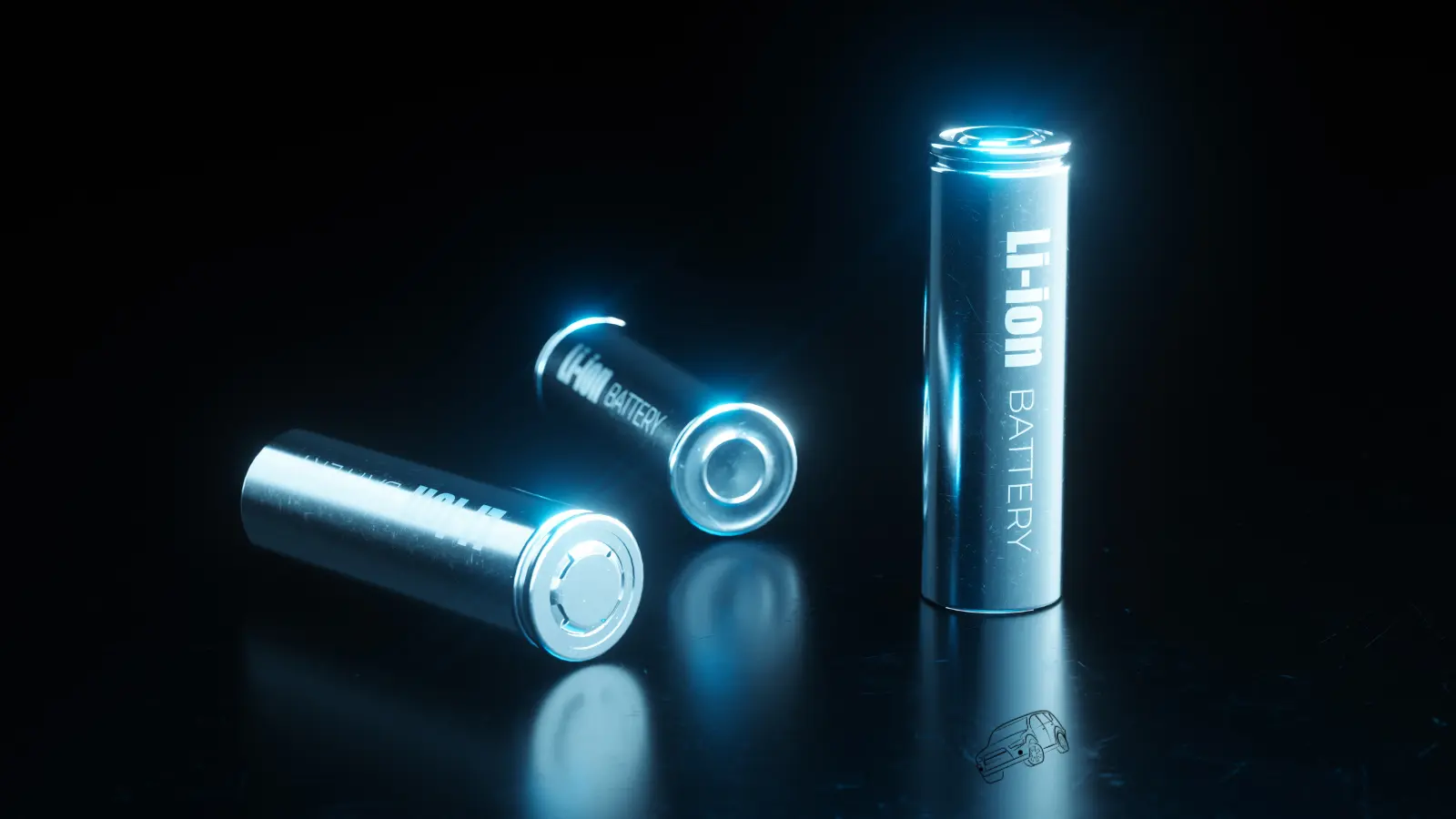This article is from the Automotivean website and discusses about How to Revive Lithium Ion Battery.
To revive a lithium-ion battery, start by fully discharging it, then recharge it to full capacity. After that, repeat the process a few times to extend the battery’s life.
Reviving a lithium-ion battery can help improve its performance and increase its overall lifespan, saving you money and reducing electronic waste. By following these simple steps, you can effectively revive and prolong the life of your lithium-ion battery, allowing you to get the most out of your electronic devices.
Whether it’s a smartphone, laptop, or power tool, giving your lithium-ion battery a little TLC can make a big difference in its longevity and performance.
Understanding Battery Capacity
Discover the secrets of understanding battery capacity and learn how to revive a lithium-ion battery. Uncover tips and techniques to optimize battery performance and extend its lifespan.
Understanding Battery Capacity
Lithium-ion batteries are the powerhouse of modern electronic devices, but over time, their capacity can decline, leading to reduced performance and shorter runtime. To ensure the best results, it is essential to comprehend the factors influencing battery capacity and degradation over time.
### Capacity Degradation Over Time
As lithium-ion batteries are used, their capacity gradually decreases. This degradation is primarily due to chemical reactions that occur during charging and discharging cycles. Over time, these reactions can diminish the battery’s ability to hold a charge, resulting in reduced capacity and a shorter lifespan.
### Factors Affecting Battery Capacity
Several factors influence the capacity and lifespan of lithium-ion batteries. These include:
- Temperature: High temperatures can accelerate capacity loss, while lower temperatures can help maintain capacity.
- Cycle Count: Repeated charging and discharging cycles gradually reduce the battery’s capacity over time.
- Depth of Discharge: Deeper discharges can contribute to faster capacity degradation.
- Charging Rate: Rapid charging can stress the battery and lead to reduced capacity over time.
Understanding these factors is crucial for maintaining and reviving lithium-ion battery capacity. By considering these influences, users can take proactive steps to prolong their battery’s lifespan and optimize its performance.
By being aware of capacity degradation and the factors that influence it, users can make informed decisions to preserve and extend the lifespan of their lithium-ion batteries.

Credit: batteryuniversity.com
Tips For Extending Battery Life
To extend the life of a lithium-ion battery, it’s important to avoid overcharging and extreme temperatures, as they can degrade the battery. Additionally, implementing regular partial discharges and keeping the battery at around 50% charge when storing can help revive and prolong its longevity.
Avoiding Deep Discharges
One of the most important tips for extending the life of your lithium-ion battery is to avoid deep discharges. Deep discharges occur when the battery is drained completely before recharging, which can cause irreversible damage. To prevent this, try to keep your battery level above 20% at all times.
Additionally, avoid leaving your battery in a discharged state for long periods of time. If you know you won’t be using your device for an extended period, it’s best to charge it to around 50% and then store it in a cool, dry place.
Optimal Charging Practices- How to Revive Lithium Ion Battery
Using optimal charging practices can also help extend the lifespan of your lithium-ion battery. However, overcharging or leaving your device plugged in overnight can actually decrease battery life in the long run.
Instead, try to charge your device in short bursts throughout the day. For example, you can charge it for 10-15 minutes when it reaches 20% battery, and again when it reaches 80%. This will help maintain a healthy battery level without overcharging.
Additionally, it is recommended that you use the original charger that came with your device. Generic chargers may not provide the proper voltage, which can lead to overheating and reduced battery life.
Maintaining Ideal Temperature- How to Revive Lithium Ion Battery
Temperature plays a crucial role in the performance and lifespan of your lithium-ion battery. Extreme temperatures, both hot and cold, can cause permanent damage to the cells within the battery.
It’s important to avoid exposing your device to excessive heat or cold. For example, don’t leave it in a hot car or expose it to direct sunlight for extended periods. Similarly, avoid using your device in extremely cold conditions, as this can drain the battery quickly and potentially damage it.
When charging your device, ensure it is in a well-ventilated area to prevent overheating. It’s also a good idea to remove any protective cases while charging, as they can trap heat and prevent proper airflow.
Identifying Signs Of Battery Degradation- How to Revive Lithium Ion Battery
To identify signs of battery degradation, look out for reduced battery life and slower charging times. You can attempt to revive a lithium-ion battery by cycling it through full charges and discharges or utilizing a battery reconditioning device. Regular maintenance can also help prolong battery lifespan.
Reduced Battery Life- How to Revive Lithium Ion Battery
As our smartphones and laptops become integral parts of our daily lives, a dwindling battery life can cause frustration and productivity loss. One of the most common signs of battery degradation is a reduced battery life. If your device constantly requires charging, even with minimal usage, it may be time to revive your lithium-ion battery.
There are a few indicators that can help you identify reduced battery life:
- The battery drains at a faster rate than before, requiring frequent charges.
- Your device shuts down unexpectedly, indicating a sudden drop in battery power.
- The battery percentage decreases rapidly or inconsistently, indicating an inaccurate battery measurement.
If you notice these signs, your lithium-ion battery may be suffering from degradation. But don’t worry, there are solutions to revive its efficiency and extend its lifespan.
Increased Charging Time- How to Revive Lithium Ion Battery
Another telltale sign of battery degradation in lithium-ion batteries is increased charging time. If your devices take longer to charge than when they were new, it’s likely an indicator of reduced battery health.
Here are some signs that your battery may be experiencing increased charging time:
- The charging progress on your device seems slower than before.
- Your device’s battery heats up significantly during charging, hampering the charging speed.
- The battery percentage increases slowly or reaches a plateau, even after prolonged charging.
These signs can be frustrating, especially when you need your device to be ready quickly. However, understanding these indications allows you to take the necessary steps to revive your lithium-ion battery’s performance.
Now that you’re aware of the signs of battery degradation, the next step is to explore effective ways to revive your lithium-ion battery and regain its optimal performance. But first, let’s dive deeper into the causes behind these signs of degradation.

Credit: m.youtube.com
Reviving A Struggling Battery- How to Revive Lithium Ion Battery
Reviving a struggling lithium-ion battery can bring significant benefits, extending its lifespan and improving overall performance. Whether it is a smartphone, laptop, or any other device, the methods to revive a struggling lithium-ion battery are essential to maximize its efficiency. In this post, we will delve into some effective techniques to revitalize a struggling lithium-ion battery, ensuring optimal functionality and longevity.
Performing Calibration Cycles- How to Revive Lithium Ion Battery
One of the key strategies to revive a struggling lithium-ion battery is to conduct regular calibration cycles. Calibrating the battery helps to recalibrate the power gauge, ensuring it accurately reflects the remaining battery life. To perform a calibration cycle:
- Discharge the battery completely until the device shuts down.
- Recharge the battery to its full capacity without interruptions.
- Repeat this process regularly to maintain the battery’s accuracy and health.
Utilizing Battery-saving Modes- How to Revive Lithium Ion Battery
Another effective approach to revive a struggling lithium-ion battery is to leverage battery-saving modes provided by devices. These modes help in optimizing power usage and extending battery life. Some efficient battery-saving modes include:
- Low Power Mode: Reducing background activities and dimming the screen to conserve energy.
- Airplane Mode: Disconnecting from networks to prevent unnecessary power consumption.
- Custom Settings: Configuring specific settings to minimize power usage based on individual preferences.
Importance Of Firmware Updates- How to Revive Lithium Ion Battery
Stay current with firmware updates to optimize Lithium-ion battery performance and longevity. Upgrading firmware ensures battery efficiency and revives its potential capacity, prolonging its lifespan and usability. Regular updates are crucial for maintaining peak battery health.
Enhancing Battery Performance Through Updates- How to Revive Lithium Ion Battery
Regular firmware updates play a vital role in optimizing lithium-ion battery performance.
Ensuring Compatibility With The Latest Technology- How to Revive Lithium Ion Battery
By updating firmware, batteries can remain compatible with the newest technologies.
These updates help prolong the battery life and ensure efficient functioning.
Safety Precautions- How to Revive Lithium Ion Battery
Avoiding Overcharging:
Charge your lithium-ion battery only up to its recommended capacity.
Avoid sudden voltage spikes that can damage the battery cells.
Proper Storage Practices:
Store your lithium-ion batteries in a cool, dry place away from direct sunlight.
Use original battery packaging or cases for safekeeping during storage.

Credit: springwise.com
Frequently Asked Questions about How to Revive Lithium Ion Battery
Can A Dead Lithium-ion Battery Be Restored?
Yes, a dead lithium-ion battery can sometimes be revived through a process called reconditioning.
How Do You Wake Up A Dead Lithium Battery?
To wake up a dead lithium battery, try charging it slowly for a while to revive it.
How Do You Revive A Lithium Battery That Won’t Charge?
To revive a lithium battery that won’t charge, try these steps: 1. Disconnect the battery from the device. 2. Let it cool down for 2-3 hours. 3. Plug it into a reliable charger. 4. Charge it for at least 12 hours.
5. If it still won’t charge, consider replacing the battery.
How Do You Reset A Lithium-ion Battery?
To reset a lithium-ion battery, fully charge and discharge it once every few months. This helps recalibrate the battery’s capacity.
Last Word about Revive Lithium Ion Battery
Reviving a lithium-ion battery is essential for extending its lifespan and reducing waste. By following the simple steps outlined in this post, you can significantly improve your battery’s performance and save money in the long run. With proper care and maintenance, you can keep your lithium-ion batteries healthy and functioning optimally for years to come.


